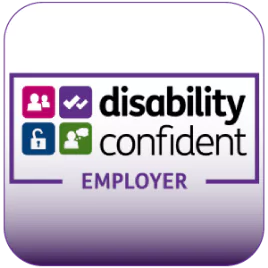By using current case studies and advanced techniques, Omni’s EDI training programmes enable leadership teams to foster an inclusive environment within the workplace helping to retain and develop diverse talent.
The True Costs of a Bad Hire




How much is a bad hire really costing you?
We’ve all heard the shocking statistics that a bad hire costs hundreds, thousands and even tens of thousands of pounds to your business. But do you know the true costs?
A recent report by CV-Library found that a worrying 51.3% of UK companies don’t know their average cost per hire, meaning that they definitely don’t know the costs of a bad one. However, knowing how much an unsuccessful placement costs your business is essential for assessing your resourcing effectiveness and proving your Talent Acquisition Team is a profit-generator rather than a cost centre. So, what’s in a bad hire?
The actual costs of a bad hire are the costs directly incurred and subsequently lost following the departure of a new employee. These can include the obvious costs such as agency fees, advertisement costs, any salary or benefits paid, and the time invested in sourcing, interviewing and onboarding the new employee.
The bad news is that these costs will be incurred again when recommencing the talent attraction and recruitment process. The good news is that some of these costs can be minimised the second time around. For example, you won’t need to spend time writing an advertisement or briefing a resourcing partner, or you might be able to skip the sourcing and interview stage entirely by offering the position to your second choice candidate in your talent pool.
What’s often overlooked when calculating the cost of a bad hire, are the consequential costs. These are costs incurred as a result of the damage caused by a new employee leaving and can include:
Financial – as well as the costs of resourcing and onboarding, performance management costs are often missed. These are costs around additional training including managers and HR time supporting the ‘bad hire’ and ultimately the cost of time spent in exiting a poor hire and rehiring another.
Engagement – existing employees experiencing low morale because of the disruption caused, the extra work incurred, the loss of time, or even the low morale of the bad hire themselves.
Turnover – low morale can result in high employee turnover, as employees feel disengaged with their work and inclined to “follow the crowd” as doom and gloom infiltrates the business and more employees leave.
Performance – as well as the lower levels of performance of the new hire, with open positions and low engagement, comes decreased performance from other employees. Existing employees either have too much to handle, no one to manage their workload or simply no will to go above and beyond. Oxford Economics reports it takes around 10-20 weeks to reach productivity when a good hire enters a new role in the same sector, and 20-40 for a new hire in a new sector. This level is never reached when we are dealing with a bad hire
So what does this all tell us about the cost of a bad hire? Well this varies greatly between roles and organisations, though the most robust studies show that between 25% – 200% of a salary will encompass all the direct and consequential costs. But it’s not all bad.
Whatever figure you calculator returns, is a figure that’s lost to your business. But that doesn’t mean you can’t get change. Yes, a bad hire is a bad result, but it’s also an opportunity to improve things. Specifically, a bad hire should get you:
If you’d like to know more about how Omni RMS can help you calculate the true cost of employee turnover and therefore reduce bad hires and turn that cost into profit, get in touch with our specialist team today.

Absolutely. Omni’s development centres are specifically designed to unlock the potential of your existing employees. Our structured assessments, aligned to your internal frameworks, are designed to identify individuals’ strengths, skills gaps, and areas for improvement, informing targeted developmental activities that drive real impact on individual and organisational performance.
Our assessment solutions are designed to elevate your hiring process by identifying the best candidates based on their skills, potential, and fit for the role. We help you define the critical competencies required for success, develop tailored assessments that accurately evaluate these competencies, and provide deep insights into candidates’ aptitude and personality traits. This evidence-based approach improves productivity, reduces turnover, and ensures a positive candidate experience. There are several benefits that personality profiling can bring to the recruitment process, such as supporting inclusive hiring, improved decision making, and increased efficiency.
Omni enhances your Employer Brand by presenting your organisation in a way that resonates with different candidate personas. By identifying these personas through rigorous market research and engaging them where they spend time online, Omni ensures that your recruitment marketing is relevant and broadens your access to talent. This approach pulls on relevant levers that are important to candidates’ values and drivers. Enhancing the employer brand to attract and retain talent remains one of the top key trends in recruitment and Omni’s Talent Strategy team can help your organisation do so.
The Resourcing Effectiveness Assessment (REA) is a rapid and flexible audit of an organisation’s resourcing maturity. The REA takes an integrated approach with key data derived from surveying recent hires, regretted candidates, and hiring managers; focus groups with strategic leaders, hiring managers and HR/TA teams; align with desktop research. Evaluation uses Omni’s four-level maturity index across five key areas: Strategy, People & Experience, Process, Tech & Data and EDI, with a further 20 sub-categories.






